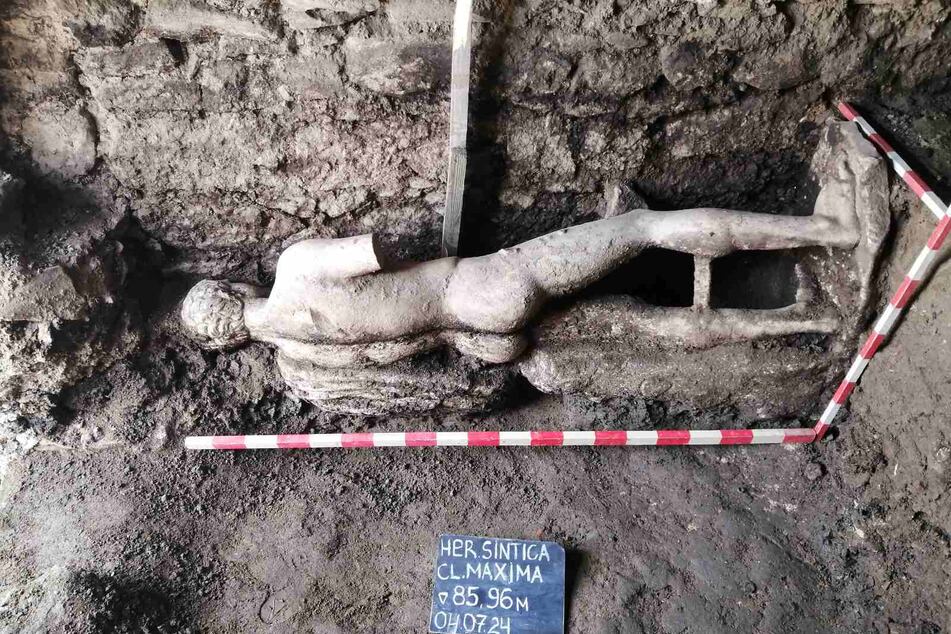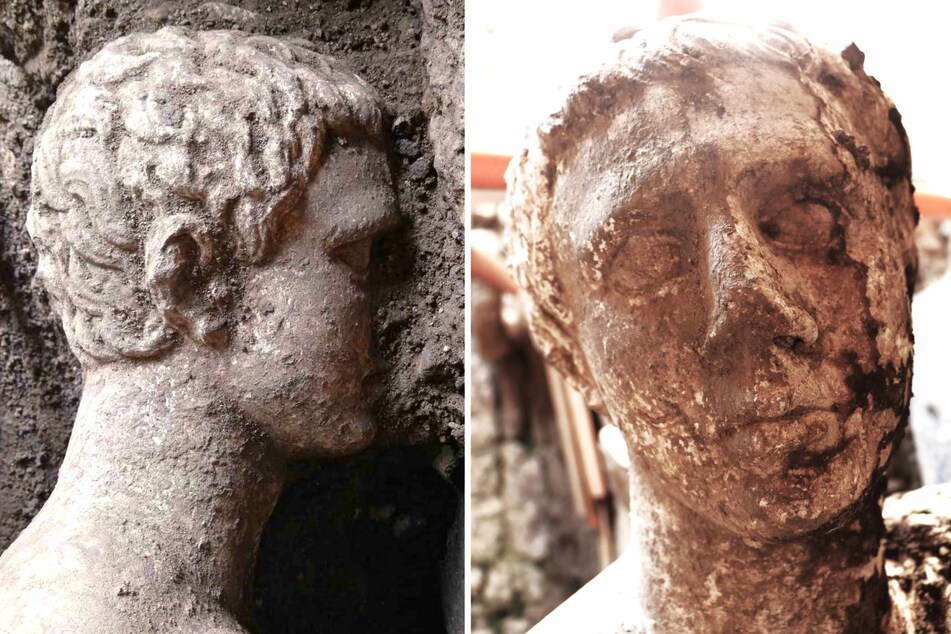Ancient Roman marble statue recovered from Bulgarian sewer
Petrich, Bulgaria - An exceptional white marble statue from Roman times was recovered by archeologists on Friday from the sewer ruins of an ancient city in southwestern Bulgaria.

The 6-foot 10-inch tall statue, likely dating from the 2nd century AD, is missing an arm but has a perfectly preserved head, a rarity for Roman statues and a unique find for Bulgaria, archaeological excavations chief Lyudmil Vagalinski said.
"Such Roman copies of ancient Greek models can be seen in Athens and northern Greece, as well as in the Louvre museum, but they are rare," he said, also noting its "very high quality" as a work of art.
Archaeologists stumbled upon the unexpected find last week in the ancient Roman town of Heraclea Sintica while digging in the so-called Cloaca Maxima, the city's tunnel-shaped urban sewage canal.
They first came upon a foot before the whole statue – lying on its left side facing the wall – emerged little by little as they kept digging.
The sculpture, which archaeologists think depicts a king with a slender profile and divine traits, was spared from strong earthquakes in the 4th century AD and from floods by a covering of earth.
"This was the period when Christianity was forcing its way into the Roman Empire. The statue, a symbol of pagan times, was therefore carefully hidden," Vagalinski explained.
The statue's height "was intended to demonstrate the superiority of God over mankind," he added.
A week after the surprising discovery, archaeologists proceeded with the statue's meticulous excavation.
Its most fragile parts – the neck and the ankles – were covered in protective foam to prevent them from breaking when the one-ton figure was lifted upright from the ground.
It was placed in a wooden box for transportation to the museum in the nearby town of Petrich, where experts will study and restore it before putting it on display for the public.
Treasure of antiquity unearthed from long-neglected excavation site

The discovery highlights the splendors of the ancient Roman city of Heraclea Sintica, mentioned in the writings of Homer and Herodotus.
Its ruins were first discovered in the late 1950s at the foot of the volcanic mountain Kozhuh near Bulgaria's southwestern borders with Greece and North Macedonia.
But lack of funds for excavations in a poor country plagued by corruption left authorities long unaware of its value.
Its mosaics and works of art were looted and its marble streets and pillars were even blown up to make room for the construction of a railroad in the 1970s.
It wasn't until police seized a plaque with a Latin inscription in 2002, identifying the town as Heraclea Sintica, that people realized the historical importance of the site, said Katia Stoyanova, who is in charge of cultural heritage in Petrich.
Archeological excavations then began in 2007.
Barely 10% of the ancient city, which covered an area of around 10 square kilometers and had an estimated population of 50,000 inhabitants, has been explored to date.
It was founded in the fourth century BC and prospered under the Romans thanks to its trade in wood and painted ceramic masks for the theatre.
A series of natural disasters led its inhabitants to seek refuge on Mount Kozhuh around the acropolis while the city itself was abandoned.
Cover photo: Screenshot/Facebook/Archaeologia Bulgarica